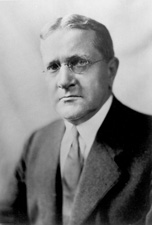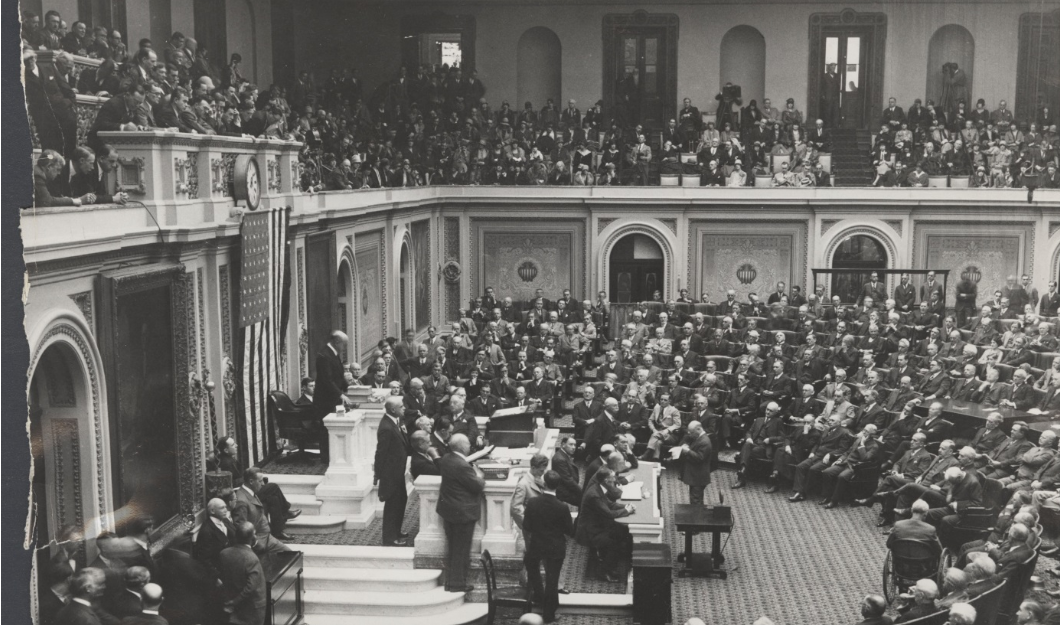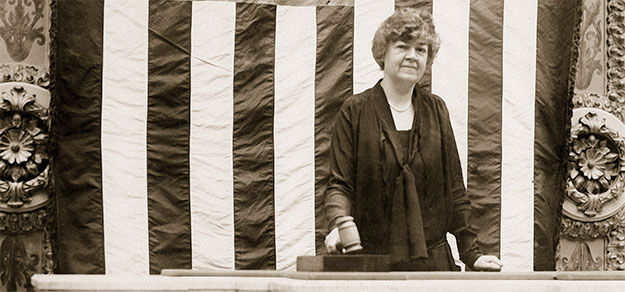|
Earl Major
James Earl Major (January 5, 1887 – January 4, 1972) was an American lawyer, jurist, and politician. He served as a United States representative from Illinois, a United States circuit judge of the United States Court of Appeals for the Seventh Circuit and a United States district judge of the United States District Court for the Southern District of Illinois. Education and career Born in Donnellson, Illinois, Major attended the common and high schools of his native city. He graduated from Brown's Business College in 1907 and from the Illinois College of Law (now DePaul University College of Law) at Chicago in 1909. He was admitted to the bar in 1910 and commenced the practice of law in Hillsboro, Illinois in 1912. He served as prosecuting attorney of Montgomery County, Illinois from 1912 to 1920. Congressional service Major was elected as a Democrat to the 68th United States Congress, serving from March 4, 1923, to March 3, 1925. He was an unsuccessful candidate for r ... [...More Info...] [...Related Items...] OR: [Wikipedia] [Google] [Baidu] |
United States Federal Judge
In the United States, a federal judge is a judge who serves on a court established under Article Three of the U.S. Constitution. Often called "Article III judges", federal judges include the chief justice and associate justices of the U.S. Supreme Court, circuit judges of the U.S. Courts of Appeals, district judges of the U.S. District Courts, and judges of the U.S. Court of International Trade. Federal judges are not elected officials, unlike the president and vice president and U.S. senators and representatives. They are nominated by the president and confirmed by the Senate. The Constitution gives federal judges life tenure, and they hold their seats until they die, resign, or are removed from office through impeachment. The term "federal judge" may also extend to U.S. magistrate judges or the judges of other federal tribunals within the judiciary such as the U.S. Bankruptcy Courts, the U.S. Court of Federal Claims, the U.S. Court of Appeals for the Armed ... [...More Info...] [...Related Items...] OR: [Wikipedia] [Google] [Baidu] |
United States House Of Representatives
The United States House of Representatives is a chamber of the Bicameralism, bicameral United States Congress; it is the lower house, with the U.S. Senate being the upper house. Together, the House and Senate have the authority under Article One of the United States Constitution, Article One of the Constitution of the United States, U.S. Constitution to pass or defeat federal legislation, known as Bill (United States Congress), bills. Those that are also passed by the Senate are sent to President of the United States, the president for signature or veto. The House's exclusive powers include initiating all revenue bills, Impeachment in the United States, impeaching federal officers, and Contingent election, electing the president if no candidate receives a majority of votes in the United States Electoral College, Electoral College. Members of the House serve a Fixed-term election, fixed term of two years, with each seat up for election before the start of the next Congress. ... [...More Info...] [...Related Items...] OR: [Wikipedia] [Google] [Baidu] |
73rd United States Congress
The 73rd United States Congress was a meeting of the legislative branch of the United States federal government, composed of the United States Senate and the United States House of Representatives. It met in Washington, D.C. from March 4, 1933, to January 3, 1935, during the first two years of Presidency of Franklin D. Roosevelt, Franklin D. Roosevelt's presidency. Because of the newly ratified Twentieth amendment to the United States Constitution, 20th Amendment, the duration of this Congress, along with the term of office of those elected to it, was shortened by days. The apportionment of seats in the United States House of Representatives, House of Representatives was based on the 1930 United States census. The Democratic Party (United States), Democrats greatly increased their majority in the House, and won control of the Senate for the first time since the 65th United States Congress, 65th Congress in 1917. With Franklin D. Roosevelt being sworn in as U.S. President, presid ... [...More Info...] [...Related Items...] OR: [Wikipedia] [Google] [Baidu] |
72nd United States Congress
The 72nd United States Congress was a meeting of the legislative branch of the United States federal government, consisting of the United States Senate and the United States House of Representatives. It met in Washington, D.C. from March 4, 1931, to March 4, 1933, during the last two years of Presidency of Herbert Hoover, Herbert Hoover's presidency. The apportionment of seats in this United States House of Representatives, House of Representatives was based on the 1910 United States census. The Senate had a Republican Party (United States), Republican majority. The House started with a very slim Republican majority, but by the time it first met in December 1931, the Democrats had gained a majority through special elections. Major events * Ongoing: Great Depression * January 12, 1932: Hattie Wyatt Caraway of Arkansas became the first woman elected to the United States Senate. (Rebecca Latimer Felton of Georgia had been appointed to fill a vacancy in 1922) Caraway had won a s ... [...More Info...] [...Related Items...] OR: [Wikipedia] [Google] [Baidu] |
71st United States Congress
The 71st United States Congress was a meeting of the legislature of the United States federal government, consisting of the United States Senate and the United States House of Representatives. It met in Washington, D.C. from March 4, 1929, to March 4, 1931, during the first two years of Herbert Hoover's presidency. The apportionment of seats in the House of Representatives was based on the 1910 United States census. Both the House and Senate remained under Republican control, with increased majorities in each chamber. And with Herbert Hoover being sworn in as president on March 4, 1929, the Republicans maintained an overall federal government trifecta. The 71st Congress also featured the most special elections of any Congress with 27 in all. Major events * March 4, 1929: Herbert C. Hoover became President of the United States * October 24, 1929 – October 29, 1929: Wall Street Crash of 1929: Three multi-digit percentage drops wipe out more than $30 billion from the ... [...More Info...] [...Related Items...] OR: [Wikipedia] [Google] [Baidu] |
70th United States Congress
The 70th United States Congress was a meeting of the legislative branch of the United States federal government, consisting of the United States Senate and the United States House of Representatives. It met in Washington, D.C., from March 4, 1927, to March 4, 1929, during the last two years of Calvin Coolidge's Presidency of Calvin Coolidge, presidency. The apportionment of seats in the United States House of Representatives, House of Representatives was based on the 1910 United States census. Both chambers had a Republican Party (United States), Republican majority - albeit reduced from the previous Congress - and along with U.S. President, President Coolidge, the Republicans maintained an overall federal government government trifecta#United States, trifecta. Major events * November 6, 1928: United States Senate elections, 1928, U.S. Senate elections and United States House of Representatives elections, 1928, U.S. House elections * This was the last Congress to be exclusive ... [...More Info...] [...Related Items...] OR: [Wikipedia] [Google] [Baidu] |
69th United States Congress
The 69th United States Congress was a meeting of the legislative branch of the United States federal government, consisting of the United States Senate and the United States House of Representatives. It met in Washington, D.C. from March 4, 1925, to March 4, 1927, during the third and fourth years of Presidency of Calvin Coolidge, Calvin Coolidge's presidency. The apportionment of seats in the United States House of Representatives, House of Representatives was based on the 1910 United States census. The Republican Party (United States), Republicans made modest gains in maintaining their majority in both chambers, and with the election of U.S. President, President Calvin Coolidge to his own term in office, the Republicans maintained an overall federal government government trifecta#United States, trifecta. Major events A special session of the Senate was called by President Coolidge on February 14, 1925. * Impeachment of Judge George W. English — On April 1, 1926, the House o ... [...More Info...] [...Related Items...] OR: [Wikipedia] [Google] [Baidu] |
United States Congress
The United States Congress is the legislature, legislative branch of the federal government of the United States. It is a Bicameralism, bicameral legislature, including a Lower house, lower body, the United States House of Representatives, U.S. House of Representatives, and an Upper house, upper body, the United States Senate, U.S. Senate. They both meet in the United States Capitol in Washington, D.C. Members of Congress are chosen through direct election, though vacancies in the Senate may be filled by a Governor (United States), governor's appointment. Congress has a total of 535 voting members, a figure which includes 100 United States senators, senators and 435 List of current members of the United States House of Representatives, representatives; the House of Representatives has 6 additional Non-voting members of the United States House of Representatives, non-voting members. The vice president of the United States, as President of the Senate, has a vote in the Senate ... [...More Info...] [...Related Items...] OR: [Wikipedia] [Google] [Baidu] |
68th United States Congress
The 68th United States Congress was a meeting of the legislative branch of the United States federal government, consisting of the United States Senate and the United States House of Representatives. It met in Washington, D.C., from March 4, 1923, to March 4, 1925, during the last months of Warren G. Harding's presidency, and the first years of the administration of his successor, Calvin Coolidge. The apportionment of seats in the House of Representatives was based on the 1910 United States census. Both chambers maintained a Republican majority—albeit greatly reduced from the previous Congress and with losing supermajority status in the House—and along with President Harding, the Republicans maintained an overall federal government trifecta. Major events * August 2, 1923: President Warren G. Harding dies, and Vice President Calvin Coolidge becomes President of the United States * December 3–5, 1923: The election for the House speakership takes 9 ballots Major ... [...More Info...] [...Related Items...] OR: [Wikipedia] [Google] [Baidu] |
Montgomery County, Illinois
Montgomery County is a County (United States), county located in the U.S. state of Illinois. According to the 2020 United States census, it had a population of 28,288. Its county seat is Hillsboro, Illinois, Hillsboro. History Montgomery County was formed in 1821 out of Bond County, Illinois, Bond and Madison County, Illinois, Madison counties. It was named in honor of Richard Montgomery, an American Revolutionary War general killed in 1775 while attempting to capture Quebec City, Canada.Allan H. Keith''Historical Stories: About Greenville and Bond County, IL'' Consulted on August 15, 2007. Perrin's 1882 ''History of Montgomery County'' relates that the county was named in honor of Gen. Montgomery, but goes on to say that "others are dubious as to whence it received its name." File:Montgomery County Illinois 1821.png, Montgomery County from the time of its creation to 1827 File:Montgomery County Illinois 1827.png, Montgomery County between 1827 and 1839 File:Montgomery County ... [...More Info...] [...Related Items...] OR: [Wikipedia] [Google] [Baidu] |
Admission To The Bar In The United States
Admission to the bar in the United States is the granting of permission by a particular court system to a lawyer to practice law in the jurisdiction. Each U.S. state and jurisdiction (e.g. territories under federal control) has its own court system and sets its own rules and standards for bar admission. In most cases, a person is admitted or called to the bar of the highest court in the jurisdiction and is thereby authorized to practice law in the jurisdiction. Federal courts, although often overlapping in admission requirements with states, include additional steps for admission. Typically, lawyers seeking admission to the bar of one of the U.S. states must earn a Juris Doctor degree from a law school approved by the jurisdiction, pass a bar exam and professional responsibility examination, and undergo a character and fitness evaluation, with some exceptions to each requirement. A lawyer admitted in one state is not automatically allowed to practice in any other. Some st ... [...More Info...] [...Related Items...] OR: [Wikipedia] [Google] [Baidu] |






